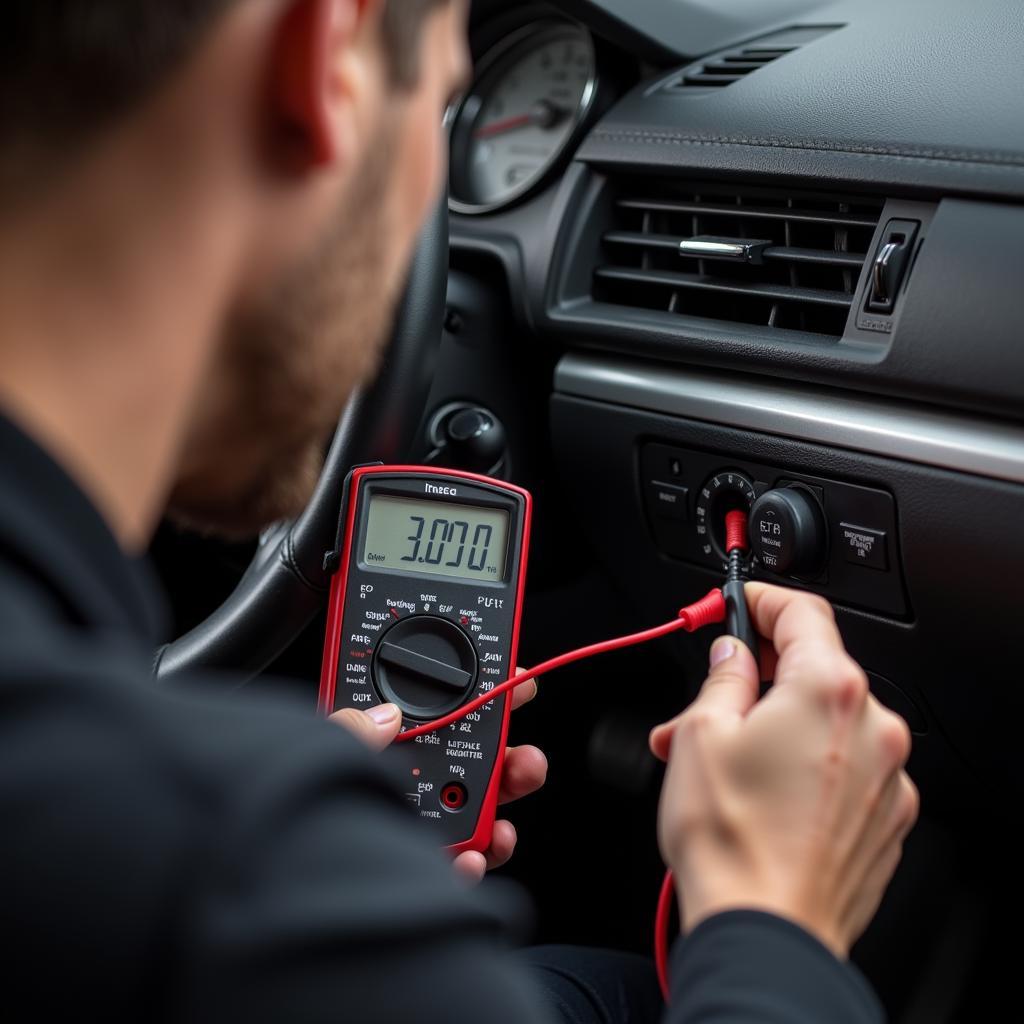You’re in a hurry, you turn the key in the ignition, and nothing happens. Just a click, a whimper, or even a complete silence. Your car battery has died. It’s a common issue, but it’s not always easy to diagnose and fix.
In this comprehensive guide, we’ll cover everything you need to know about a car battery dying, including:
What Causes a Dead Battery?
A dead battery is often a symptom of a bigger issue. Here are some common causes:
- Old age: Like any battery, car batteries have a limited lifespan, typically 3-5 years. Over time, the battery’s ability to hold a charge diminishes.
- Extreme temperatures: Both heat and cold can drain a car battery’s power. Extreme heat speeds up chemical reactions within the battery, leading to faster discharge, while extreme cold slows down those reactions, making it harder for the battery to deliver power.
- Leaving lights or accessories on: Forgetting to turn off your headlights, radio, or other accessories can quickly drain a battery, especially if you leave them on for an extended period.
- Leaking or damaged battery: A cracked or corroded battery case can allow fluids to leak out, reducing its capacity and causing damage.
- Parasitic draw: This refers to a continuous drain on the battery from components that are supposed to be off, like a faulty alarm system or a malfunctioning radio.
- Alternator problems: The alternator is responsible for charging the battery while the engine is running. A faulty alternator can prevent the battery from charging properly, leading to a dead battery over time.
How to Fix a Dead Battery
There are a couple of ways to get your car battery going again:
1. Jump Start:
This is the most common way to jump start a dead battery. You’ll need another car with a working battery and a set of jumper cables. Follow these steps:
- Park both cars close together and ensure the parking brakes are engaged.
- Identify the positive (+) and negative (-) terminals on both batteries. (Red for positive, black for negative.)
- Connect the positive cable to the positive terminal of the dead battery.
- Connect the other end of the positive cable to the positive terminal of the good battery.
- Connect the negative cable to the negative terminal of the good battery.
- Connect the other end of the negative cable to a metal grounding point on the dead car’s chassis (away from the battery).
- Start the good car and let it run for a few minutes.
- Attempt to start the dead car.
2. Battery Charger:
If a jump start doesn’t work, or you don’t have another car with a good battery, you can use a battery charger to bring it back to life. Connect the charger to the battery terminals, making sure to follow the instructions for your specific charger model.
How to Prevent a Dead Battery
Here are some helpful tips to avoid a dead battery in the future:
- Regularly check your battery: Check the battery’s fluid levels and terminals for corrosion. Have it tested at an auto parts store to ensure it’s holding a charge.
- Replace a worn-out battery: If your battery is more than 5 years old, it’s a good idea to replace it. Even if it still works, its capacity will be diminished.
- Don’t leave lights or accessories on: Make a habit of double-checking that all lights and accessories are off when you leave your car.
- Minimize the use of accessories when the engine is off: Try to avoid using things like the radio, headlights, or heated seats when the engine isn’t running.
- Avoid extreme temperatures: If you live in a hot climate, park your car in the shade whenever possible. In cold weather, consider using a battery blanket or parking your car in a garage.
- Get your alternator checked: If your alternator isn’t charging the battery properly, it’s a problem that needs to be addressed.
- Keep terminals clean: Clean your battery terminals with a wire brush or baking soda and water to remove corrosion, which can hinder the flow of electricity.
What If You Keep Having Battery Issues?
“If you’re still experiencing battery problems after trying to fix it yourself, it’s best to take it to a qualified mechanic,” says John Smith, an experienced auto technician with over 20 years of experience. “They can diagnose the problem and recommend the best solution, whether it’s a new battery, a repair to the charging system, or addressing another underlying issue.”
Common Questions About Car Batteries
- How long does a car battery last?
A car battery typically lasts between 3 to 5 years, but this can vary depending on factors like driving habits, weather conditions, and battery quality. - What’s the difference between a conventional and a AGM battery?
Conventional batteries use liquid electrolyte, while AGM (Absorbed Glass Mat) batteries have electrolyte absorbed into a fiberglass mat. AGM batteries are generally more powerful, perform better in extreme temperatures, and have a longer lifespan than conventional batteries. - Can I jump start a car with a dead battery even if it’s old?
It’s possible, but the old battery may not hold a charge for long. You may need to replace it after a jump start.
Keep Your Battery Charged: Autotippro is Here to Help
Don’t let a dead battery leave you stranded. If you have any further questions or need assistance with car battery problems, reach out to us at AutoTipPro! We’re your one-stop shop for automotive expertise.
Contact us:
+1 (641) 206-8880
500 N St Mary’s St, San Antonio, TX 78205, United States
We’re always here to help keep you on the road!






Leave a Reply